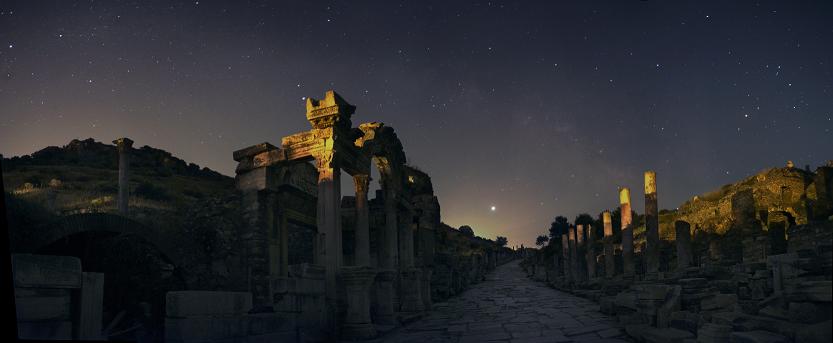
SAINT OF THE DAY
The Lives of the Saints, Martyrs, Exemplars and Prophets of ANTINOUS the GAY GOD
Updated for Each Liturgical Feast Day
By
Antonyus Subia and Hernestus Gill
Priests of Antinous
SEPTEMBER 2nd

SAINT OF THE DAY
The Lives of the Saints, Martyrs, Exemplars and Prophets of ANTINOUS the GAY GOD
Updated for Each Liturgical Feast Day
By
Antonyus Subia and Hernestus Gill
Priests of Antinous
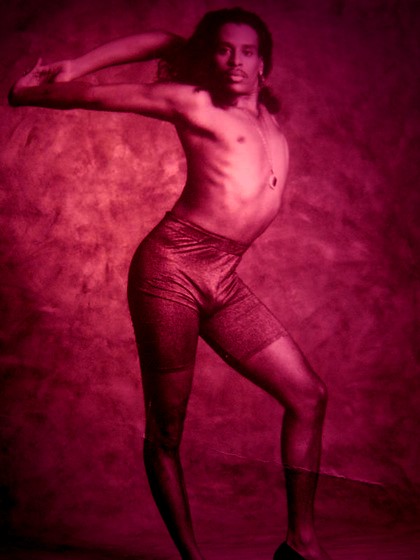
On September 2nd, the Religion of Antinous honors St. Willi Ninja, who made the whole world take notice of a gay ghetto dance style called Vogueing.
Vogueing — with its angular body movements, exaggerated model poses and intricate mime-like choreography — and the colorful characters who populated Willi Ninja's world were introduced to the public at large by Paris Is Burning, the award-winning 1990 documentary about New York's drag vogue-ball scene. Later in his career, Willi Ninja also performed in works by postmodern choreographers including Doug Elkins, David Neuman and Karole Armitage.
Vogueing had been around for years, but Willi Ninja brought it to a level of visibility and perfection in performance that no one had ever reached before, according to Sally Sommer, a professor of dance at Florida State University.
"He was tall man, about 6-3," she said, "and God gave him the biggest, broadest dance shoulders in the world, so when he would do those things with his arms it was just so impressive."
Willi Ninja is featured in Sommer's 2006 documentary Check Your Body at the Door.
William R. Leake was born in Queens New York on April 12, 1961. He began dancing at 7. By the early 1980s he was vogueing in Washington Square Park in Greenwich Village and at drag balls throughout Harlem. He prided himself on being a clean, sharp dancer, with swiftly moving arms and hands, and he was deeply inspired by the martial arts — hence his adopted name, Ninja.
As the "mother" of the House of Ninja — part dance troupe, part surrogate family — he became a New York celebrity, known as much for his quick wit and sharp tongue as for his darting limbs.
His ensembles — a coat made of braided synthetic hair, a suit jacket with a skirt and Doc Marten boots — also turned heads wherever he went: "SEVERE" is the word.
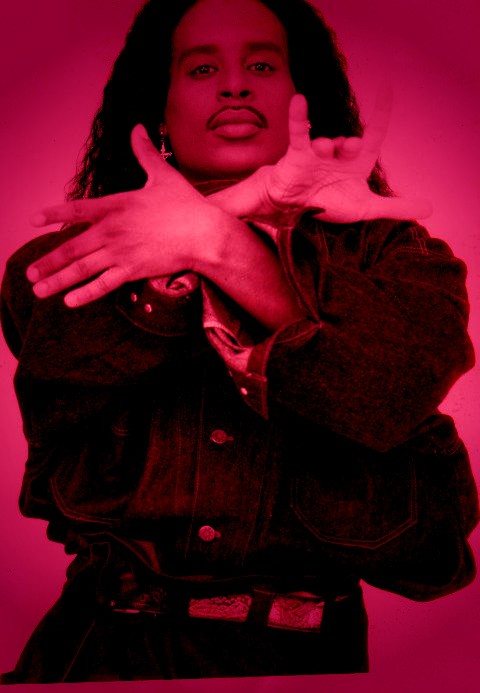
An androgynous, self-described "butch queen," St. Willi Ninja taught vogueing throughout Europe and Japan, modeled in runway shows for the fashion designers Jean Paul Gaultier and Thierry Mugler and danced in music videos such as Madonna's 1990 hit "Vogue".
He also taught models how to strut, giving stars like Naomi Campbell pointers early in their careers. Before his death in 2006, he worked with the socialite Paris Hilton, whose red carpet sashay has since become her signature.
In 2004, he opened a modeling agency, EON (Elements of Ninja), but he never gave up dancing, appearing on televisions series like "America's Next Top Model" and "Jimmy Kimmel Live", and dropping in at local clubs.
"If he saw someone doing something on the dance floor that he loved, he'd walk up to them and say, 'Oooh, child, you are fierce,'" his friend Archie Burnett recalled. "That was one of his highest compliments."
In 2003 he was diagnosed with HIV, but he continued working to support his elderly mother, despite the fact that he could not afford medical health care for himself.
His mother was a wheelchair-bound woman suffering from Parkinson's. One of Ninja's best friends, fellow dancer Archie Burnett, said St. Willi was always grateful that his mother had taken him to the ballet and the Apollo when he was a boy, which inspired him to become a dancer. So he was determined to care for her at the expense of his own seriously declining health.
St. Willi Ninja died September 2, 2006, three years after an HIV diagnosis. In the end, the famous dancer had lost his sight and become paralyzed. But that didn't stop him from being fabulous.
"He was weak, but let me tell you, he was running the show," his friend Archie said, recalling how his acolytes did his hair in the hospital room.
He said, "Child, if I gonna die, then I want to look as fabulous as possible."
The Religion of Antinous honors Willi Ninja as a Saint of Antinous and Blessed Prophet of Homoeros for his courage in overcoming racial discrimination and homophobia. While others of his generation turned to drugs or alcohol or dysfunctional violence to assuage their shattered self-esteem — St. Willi Ninja turned to the dance floor, where he converted the simple act of walking into a high-art form of sheer FABULOUSNESS.
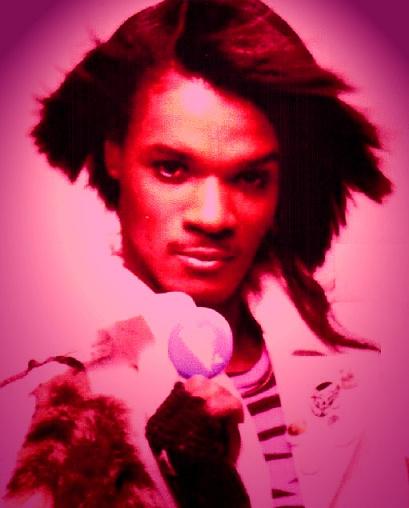
On September 7th the Religion of Antinous honors St. Jermaine Stewart (born September 7th, 1957) who was one of the first gay artists to break out of the clubs and crossover into mainstream just as the music video was being born and kids were clamoring "I want my MTV!"
St. Jermaine was an out and proud inspiration to gay kids at home in front of their parents' TV sets in the '80s, and to jaded gay grownups in front of theirs as well. He always made you smile and want to get up and push the furniture out of the way and boogie.
St. Jermaine began his performing career as a teenager in Chicago, touring with the Chi-Lites and The Staple Singers and appearing on American Bandstand and Soul Train. He would go straight from school in the afternoon to the Soul Train studios in Chicago where the show was shown locally in black-and-white — who knew that the show would become a nationwide hit within a few years?
By the early '80s he had worked with Shalamar, Millie Jackson, Tavares, the Temptations, and Culture Club as a background vocalist and dancer.
With the help of Culture Club member Mikey Craig, he landed his first solo recording contract with Clive Davis of Arista Records (10 Records in the UK) in 1984. His first single, The Word Is Out, was produced by Peter Collins and was supported by a video shot in Paris. The song reached number 41 in the US R&B and Billboard charts, and was followed by an album of the same name in 1985.
Although The Word Is Out did much to enhance Stewart's reputation, it did not prove to be the commercial success Arista had expected.
But things changed with his second album, Frantic Romantic, which included the song that would be Stewart's biggest hit, "We Don't Have To Take Our Clothes Off". It became an international success, reaching the Billboard Top 5 and number 5 in the UK charts.

Jermaine's third album, Say It Again, was probably his most successful internationally. He was big in the US and Britain, but he was stupendously popular in Europe and Asia. He was a veritable superstar in Germany , where "Don't Talk Dirty To Me" was one of the biggest selling records of 1988, making the top 5.
While other mainstream pop stars went for a mainstream look, St. Jermaine went for eye-popping glitz-and-match attire and a glamour-diva image which Asians and Europeans loved.
This was when his career peaked and began a slow but steady decline as '80s radio-friendly pop tunes fell out of favor. In the early '90s he recorded an album entitled Set Me Free. The album marked a return to the dance funk style of his pre-fame days. The title track was released as a single in the U.S., but sold poorly. The album was never released ....
Meanwhile, his health was beginning to decline. He did however start recording a new album in 1996, but never finished it. St. Jermaine Stewart died of complications of AIDS on March 17, 1997, at the age of 39.
Ironically, his biggest hit We Don't Have To Take Our Clothes Off, with its safe sex message, was one of the first mainstream pop responses to the AIDS crisis.
For his courage and for his talent and for his audacity at being an in-your-face '80s gay style icon, the Religion of Antinous honors Jermaine Stewart as a saint and prophet of homoeros. Besides, not even Diana Ross had this many costume changes in a four-minute music video:

On September 11th we remember those gay and lesbian men and women who have died in terrorist attacks.
The magnificent Religion of Antinous is not just about beauty and male-on-male sex and it's not just one continuous gay cocktail party. Alas!
The word "alas," by the way is a Latin corruption of the Greek name "Hylas" — the beloved young companion of Herakles/Hercules. In Mysia, handsome young Hylas was abducted by water nymphs and vanished below the waters of a stream. Heartbroken Herakles went mad with grief, bellowing "Hylas! Hylas!" and ripping out trees as he frantically searched for his beloved. He never abandoned his search, and his cries of "Hylas! Hylas!" continue to echo through the ages every time we say the word "alas!"
Hadrian and his beloved drowned Antinous have always been associated with Herakles and his beloved drowned Hylas. And so — alas! — the Religion of Antinous is profoundly and irrevocably associated with tragedy and with grief. That is the reason why the sculptures of the Beauteous Boy never show him smiling and boyish. He always gazes off to one side, his head tilted slightly downward, with a wistful and slightly melancholy expression on his face.
It's as if he is always whispering, "Alas!"
And so it is fitting that the Ecclesia Antinoi Annals of Saints and Martyrs and Exemplars includes the names of many, many people who have died under tragic circumstances.
Some died of overdoses or suicide. Others, such as the gay college student Matthew Shepard who was bludgeoned to death in Wyoming, were murdered simply because they were gay. In Iran, coming out is tantamount to a death sentence. Many, many others have been taken by the scourge of AIDS. And still others on our list, Aula Sancti Ecclesiae Antinoi, have suffered and died because they just happened to be at the wrong place at the wrong time.
On September 11th we remember those gay and lesbian men and women who have died in terrorist attacks. They include the gay waiters and pastry chefs in the Windows on the World restaurant on the 110th floor of the World Trade Center, and also the gay and lesbian office workers in the Twin Towers, and the gay passengers and crew aboard the hijacked planes. They also include the gay victims of the subsequent London and Madrid bombings.

We don't know the names of most of those people. But one name stands out: Mark "Bear Trap" Bingham.
Mark, 31, was a passenger aboard United Airlines Flight 93 and was flying home to see his mother. He made a phone call to his mother. He was so distracted by the chaos on board the plane that he identified himself by his full name, saying, "Hi, Mom, this is Mark Bingham." He just had time to tell her he loved her and that his plane was being hijacked before the phone call abruptly ended.
Mark was a big man at 6 ft 4 in (1.93 m) and 225 pounds (102 kg) and was a rugged rugby athlete. He is believed to have been among the passengers who attempted to storm the cockpit to try to prevent the hijackers from using the plane to kill hundreds or thousands of additional victims.
That assumption is based on the fact that his lover of six years said he had repeatedly fought back against muggers and gay bashers and that Mark definitely would not have surrendered to his fate without first putting up a fight. "Mark was a fighter. He hated to lose ... at anything!"
Mark Bingham may never have even heard of Antinous, and the Ecclesia Antinoi had not been founded yet before he died. He most definitely never expected to be remembered as a gay martyr. And he scarcely could have imagined being memorialized in movies and on websites and in books and TV docu-dramas.
He surely never expected to become a symbol and an icon. But that is what he has become.
And so, on September 11th, we remember Mark "Bear Trap" Bingham as a symbol for all those gay people who happen to be at the wrong place at the wrong time when terrorists strike — as can happen to any of us.
Like Mark (and like Herakles, for that matter), we fight and struggle to do the best we can in our day-to-day lives, but sometimes things just turn out far differently from anything we could ever imagine. Sometimes tragically so — Alas!

MAGINATION is the key word. Just imagine the cramped artist's studio in London's Chelsea district and, with the help of the artist's images, you are there. It is December 1909. The solid-black walls of the apartment contrast starkly with the red-orange drapes. Jamaican folk artefacts share space on a Victorian curio shelf with photographs of friends and relatives — a mother in Jamaica, a father in Brooklyn Heights, a famous actress in a West End production, Bram Stoker, W.B. Yeats. The jet-black walls form a void-like exhibition space which highlights the dazzling Caribbean art as well as the dozens of paintings and sketches which line the walls. Suffragette posters. Oil landscapes. But particularly watercolor illustrations of dreamscapes and fairy tales.
A brightly painted miniature theatre with ornate proscenium and cloth curtain stands proudly in one corner, with its cast of tiny cardboard cut-out "actors" waiting patiently for their entrances.
An enormous gramophone stands in the opposite corner, and Debussy's La Mer is playing at full volume, as it has been all morning. The neighbours have long since stopped complaining about the music.

The artist, Pamela Colman Smith, is a petite woman in her early 30s who sits in the middle of the studio with paint brush in hand, mixing watercolors, her eyes trance-like as the music envelops her. She is wearing a vividly hued kimono with broad sleeves made even more colorful by splotches of paint.
One of the two Japanese combs pinning back her long dark hair has loosened, causing her tresses to sag to one side, but she is oblivious. The paint is dripping from her brush, but she pays no mind, keeping her eyes firmly shut as Debussy transports her to a place she calls "the unknown country" of her artistic inner heart.
On the easel in front of her is a small canvas showing an androgynous person wearing a short kimono-like tunic with sleeves and an abstract floral design uncannily like the kimono she is wearing. The figure is striding to a precipice as a small white animal dances at his heels.
The painting is almost finished. The outline was done in pen. Only a few more brush strokes are needed for the hand-coloring. Debussy will provide the musical sunrise which will be the cue that the illustration is finished.
And then the small illustration will join all the others (about 80 in all, give or take one or two) which are carefully arranged on drying shelves around the studio. The printer is waiting. The cards must be delivered by the end of December.

She has been working on the Tarot card project for about a year, since Arthur E.A. Waite asked her to illustrate "his" new pack of Tarot cards in his long-running one-upsmanship feud with other occultists in London. He had very strong ideas about the design of the 22 Greater Trumps but was unconcerned with the 56 Lesser Trumps. Only one other artist had ever illustrated all 78 cards, an unknown 15th Century artist whose dazzling cards were jealously guarded by the Sola Busca family of Italy. The Sola Buscas had grudgingly permitted photographic copies of the cards to be put on view at the British Museum in 1908.
And so it was, that a petite 30-something sufragette took a tweedy advertising executive for the Horlick's bedtime powdered milk drink (Waite's "day job" when he wasn't doing occult spellwork) and dragged him to the British Museum and said she would do the job but only on condition that she illustrate all 78 cards with artistic license for design and color.
It had taken months of pain-staking work. "A big job for very little cash!" she would write to her friend and benefactor Alfred Stieglitz, who had made room in his famed New York photography gallery for exhibitions of some of her "Pictures in Music", watercolors she painted in a trance-like state while listening to her favorite composers, such as Mozart, Tchaikovsky and Debussy. On a visit to Paris, she had even been bold enough to introduce herself to Debussy and show him paintings she had done to his music. She was greatly flattered when he said she had captured the very essence of his music.

"You ask me how these pictures are evolved," she said. "They are not the music theme — pictures of the flying notes — not conscious illustrations of the name given to a piece of music, but just what I see when I hear music-thoughts loosened and set free by the spell of the sound."
She explained that, for example, "Often when I hear Bach I hear bells ringing in the sky, rung by whirling cords held in the hands of maidens dressed in brown."
Stieglitz had shown her music paintings to rave reviews in New York in 1907. The New York Sun critic wrote: "Pamela Colman Smith is a young woman with the quality rare in either sex — imagination."
Pamela — "Pixie" to her few close friends (mostly women) — had grown up in London and New York City, as well as in Jamaica. Her father was a globe-trotting businessman who spent little time at home. Her mother came from a long line of women poets and children's story-book writers. The details of her childhood are fuzzy. She had a dark complexion and facial features which prompted speculation that she had been adopted during her father's many trips to Jamaica. At any rate, she spent her formative years in Jamaica, where she learned the patois dialect perfectly and became a master story-teller of Jamaican tales of magic and wonder.
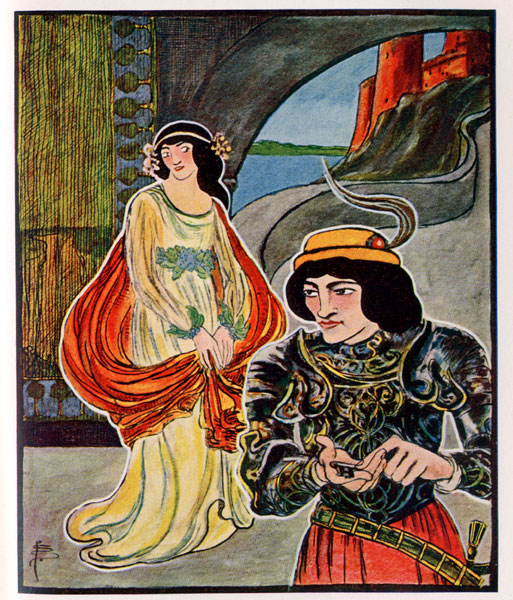
But when her mother died at an early age, little Pixie moved to Brooklyn Heights where she lived with her father and pursued art classes at the renowned Pratt Institute, a progressive school which encouraged students to explore new avenues of expression.
And when her father also died suddenly, she was shipped back to England to live with a troupe of actors who were friends of her eccentric father. She was relieved to be back in England, since her skin color had exposed her to racist discrimination in the States.
The rarified atmosphere of London's Leicester Square theatre district was an invigorating change. In New York she had been "a mulatto". In London's West End she was simply exotic. She lived with the high-profile actress Ellen Terry, who became her mother, mentor and best friend. Sir Henry Irving, a leading thespian and empresario, became her ersatz father. The three of them toured Britain in productions when they weren't staging their own plays in the West End. Pixie lived in Irving's theatre. She learned set design, costume design (and how to mend costumes between acts) and she learned how the stage is the world-in-small.
A century on, it is hard for us to appreciate how mind-opening the theatre was. There was no radio, no television. Even the cinema was in its infancy. To see the world, you went to the theatre. Pamela didn't just go to the theatre. Surrounded by actors and directors 24 hours a day, she truly LIVED the theatre. She said it was the perfect place for a budding artist.

"Go and see all the plays you can," she advised young artists. "For the stage is a great school — or should be — to the illustrator — as well as to others."
She openly admitted she had learned more in the theatre than at her famous New York art institute.
"The stage has taught me almost all I know of clothes, of action and of pictorial gestures," she said, and her advice to other artists was to throw away the textbook and just open their eyes and ears. An artist should always have a sketch pad at hand. She even took her sketch pad to the ballet to see Nijinsky dance.
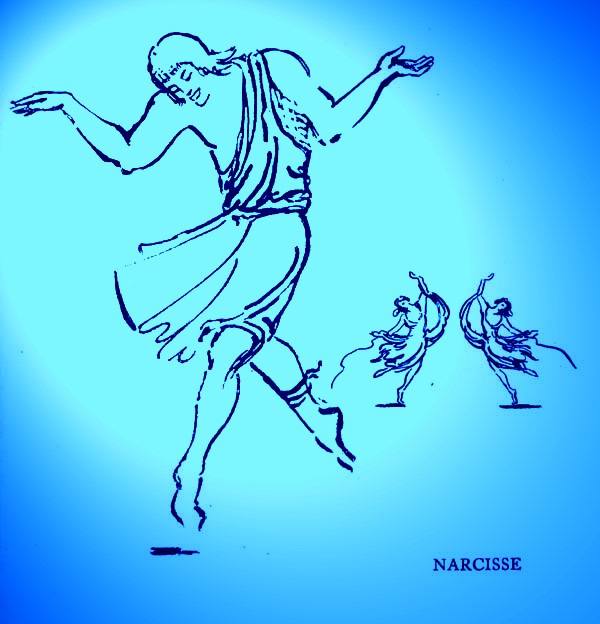
"Learn from everything, see everything, and above all feel everything! And make other people when they look at your drawing feel it too!"
She was dismissive of painters who are interested only in their medium and who shun other liberal arts.
"Keep an open mind to all things," she said. Even though you are a painter, listen to music, go to the ballet.
"Hear all the music you can, for sound and form are more closely related than we know."
And she dismissed turn-of-the-century painters who strove only for beauty, ignoring ugliness.
"For through ugliness is beauty sometimes found," she observed. She recalled having seen a very dark and brutal stage production which in a way reminded her of the gritty beauty of poverty-stricken Jamaica.
"All through that play I thought that ugly things may be true to nature, but surely it is through evil, that we realize good. The far-off scent of morning air, the blue mountains, the sunshine, the flowers, of a country I once lived in, seemed to rise before me — and there on the stage was a woman sitting on a chair, her body stiff, her eyes rolling, a wonderfully realistic picture of a fit."
Through Ellen Terry and Henry Irving, Pamela made friends with literary luminaries such as "Dracula" author Bram Stoker, "Peter Pan" playwright J.M. Barrie and and poet/playwright W.B. Yeats.
In fact, "Sherlock Holmes" was her uncle — because her real-life great uncle was the actor William Gillette, who brought Holmes to the stage in London and on Broadway. It was Gillette who introduced many of the mannerisms and props (the deerslayer cap, the meerschaum pipe) which have been intrinsically associated with Sherlock Holmes by succeeding generations. Her Uncle Bill even saw to it that Pamela illustrated the programs for his Holmes productions.
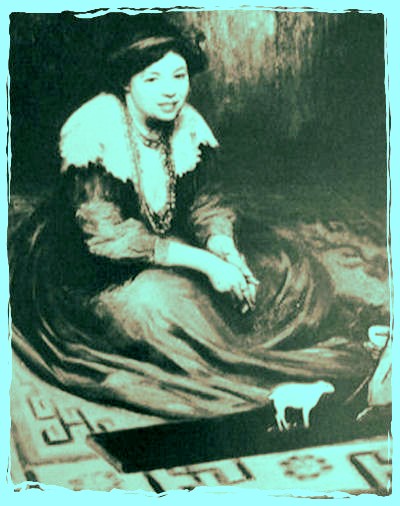
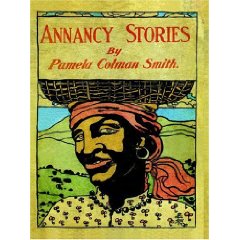
Pamela became well-known for her afternoon literary teas, at which Yeats, Stoker and other luminaries would gather in her studio while she put on the costume of a Jamaican wise woman and sat cross-legged on the floor, relating Jamaican folk tales in dialect.
She used a miniature theatre and tiny cardboard characters to illustrate her hugely delightful tales.
Her literary friends encouraged her to publish and illustrate the stories under her own name, which she did. The book is still in print.
One frequent male visitor described one such literary evening, saying, "The door was flung open, and we saw a little round woman, scarcely more than a girl, standing in the threshold. She looked as if she had been the same age all her life, and would be so to the end. She was dressed in an orange-colored coat that hung loose over a green skirt, with black tassles sewn all around over the orange silk, like the frills on a Red Indian's trousers. She welcomed us with a little shriek. She was very dark, and not thin, and when she smiled, with a smile that was peculiarly infectious, her twinkling gypsy eyes seemed to vanish altoghether. Just now, at the door they were the eyes of a joyous, excited child."
This was shortly after the turn of the 20th Century, and she had perfected her artistic style and was busy as a book and magazine illustrator. While publishers mandated style to some extent, Pamela Colman Smith advocated the Arts and Crafts style, also known as the Secession style or, in the US, as the Craftsman or, especially in California, called the Mission style.
The Arts and Crafts Movement was a style which dominated in the years before World War I, and which was between the Art Nouveau style of the 1890s and the Expressionist style which would revolutionize art after the Great War. The Arts and Crafts Movement was an attempt to reject superfluous Victorian "wedding cake" adornment and to simplify things to the basics of simple lines and solid colors, in defiance of bourgeouis homeowners who wanted clutter.
For one brief moment, in the cosy years before the war, idealistic artists such as Pamela depicted a magical world in which machines did not dominate humankind. They were artists who sought to recreate pre-industrial, even primitive styles in art, architecture and decoration. Lines were simple. Colors were bold and earthy.

Pamela's generation of artists saw that a world driven by steam pistons was heading blindly, full-steam ahead for collision with the cold and immutable forces of nature. The Titanic disaster in 1912 was only a symbolic inevitable disaster waiting to happen, as far as these artists were concerned.
The Arts and Crafts Movement flourished in the first decade of the 20th Century, and Pamela managed to get by financially with her illustrations in that style. She also provided illustrations and even wrote articles for Gustav Stickley's "The Craftsman" magazine which was a leading purveyor of the style.
Not surprisingly, her Tarot cards are an enduring monument to the Arts and Crafts Movement and its philosophy which holds that a return to timeless styles in the Arts can help the human race return to timeless virtues and ageless wisdom. She was seeking to create a world in which racist thought and moral hypocrisy would vanish along with high-button shoes and celluloid shirt collars. She wanted everyone to sit on the floor, cross-legged, and discover the childlike magic of just being alive.
The cards were published with very little fanfare in December 1909. Only a few occultists took notice, and most of them were engaged in feuds with each other. The general public did not notice. Tarot cards were considered to be "French". The only Tarot cards hitherto available were from France, and they were considered only slightly less objectionable than saucy French porn postcards. Pamela was keenly aware that her cards were not going to make inroads into popular culture.

"Oh, the prudishness and pompous falseness of a great mass of intelligent people!" she wrote in an article for Stickley's "The Craftsman". It was an article aimed at inspiring young artists. "Lift up your ideals, you weaklings, and force a way out of that thunderous clamor of the steam piston, the hurrying herd of blind humanity, noise, dust, strife, seething toil!"

Those 78 cards are a veritable map of the place which she called "the unknown country" within an artist's heart. Many of her book illustrations are variations on that theme, such as "The Hill of Heart's Desire" at left.
To look at each card in succession is to take a trip through a magical land where cosmic wisdom and virtue prevail. You can spot recurring landmarks, such as castles, bridges and towers, which recur from different vantage points throughout the "journey". This magical land is peopled by beings who at times wear Renaissance clothing and at other times wear chitons and togas. The whole magical world is a place beyond linear time and space.
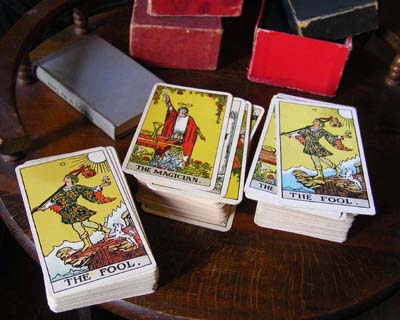
Waite never adequately acknowledged her work. In the book accompanying the cards he failed to mention her by name, saying only that a "young woman artist" had illustrated them on his instructions. But in fact, Pamela had been a member of the Order of the Golden Dawn along with Stoker and Waite. In a way it was only natural since the English-speaking world's first esoteric book store, Watkins, had just opened its doors a few steps away from the Leicester Square theatre district.
Pamela never wrote about her initiation into occult mysteries. But the very first card in the deck, The Magician, is graphic proof that she was privy to occult knowledge of the most secret sort. In 1909 only a handful of people had read a badly translated copy of Das Buch Abramelin, a 15th Century German-language grimoire written by a German-Jewish sorcerer who claimed to have been initiated into ancient mysteries by a master living in a desert cave on the banks of the Nile.
Even now, a century after Pamela painted that card, very few people have read the Book of Abramelin, certainly not in the original German. To this day there is no full English translation. Those few who have read it immediately realize that The Magician card is a very precise portrait taken straight from the ancient book.
In it, the novice magician is instructed to wear a clean white tunic bound at the waist by a symbolic ouroboros serpent. He is to wear a crimson mantle over the tunic while standing before a simple wooden table upon which are his magical tools. The book then says that, for best results, the magician's magical work space should look out over a witch's garden of flowers and magical herbs.
Whatever Waite thought of "his" cards — and he was very vague in saying what their purpose should be other than clearly to aggrandize himself — Pamela knew they were tools not for TELLING the future, but for SHAPING the future through ancient Abramelin magical spells. That occult secret, sealed in the colorful symbolism of her cards, was destined to die with her — to be rediscovered a century after she created the cards by priests of ANTINOUS THE GAY GOD.

With that first card, The Magician, and with Renaissance alchemical symbolism throughout the deck, Pamela shows she was highly knowledgeable in the occult arts.
The rest of her story is quickly told. The Titanic sank but the age of the steam pistons did not go down with it. Instead, the First World War swept aside the lofty dreams of Pamela's generation of artists. The Arts and Crafts Movement was the first casualty. By 1915 Gustav Stickley's "The Craftsman" magazine ceased publication and his design company went bankrupt.
Pamela's illustration assignments dried up. By the mid-1920s she was unable to get even one job a year. When a distant uncle died and left her a modest nest egg, she took the money and left London, buying a village cottage at the far western tip of England — not far, in fact, from the fictional location of Baskerville Hall, which had figured so prominently in Uncle Bill's Broadway-hit Sherlock Holmes plays.
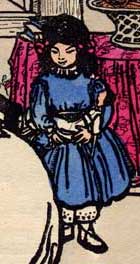
She lived in isolation with a woman companion. She died penniless at age 72 on September 18, 1951. The cottage and all her possessions were auctioned to pay back taxes, leaving her companion with nothing.
In December 1909 she had told her New York gallerista friend Alfred Stieglitz that she would send him a pack of the Tarot cards which she said were being "printed in color lithography (probably very badly) as soon as they are ready" and that she would also "send over some of the original drawings as some people MAY like them." By "some people", she meant "buyers". But the original art work has never surfaced. Not one of the 78 originals is known to exist.
The printed card decks vanished into obscurity for decades until the American playing card connoisseur Stuart R. Kaplan resurrected them in about 1970. It is largely thanks to him that anyone knows anything about this extraordinary artist, who created a single work which is ageless and timeless and which continues to appeal to new generations.
The final word belongs to Pamela Colman Smith, and it is a statement of inner strength which could just as easily be the catch-phrase of The Fool card in her Tarot:
"Banish fear, brace your courage, place your ideals high up with the sun, away from the dirt and squalor and ugliness around you and let that power that makes the 'roar of the high-power pistons' enter into your work — energy — courage — life — love. Use your wits. Use your eyes. Perhaps you use your physical eyes too much and only see the mask. Find eyes within, look for the door into the unknown country."

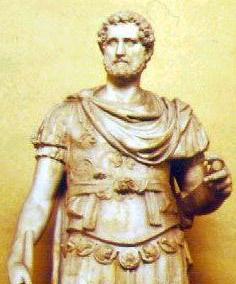
On September 19th the Religion of Antinous celebrates the birth of the Divine Emperor Antoninus Pius.
Caesar Titus Aurelius Fulvius Boionius Arrius Antoninus was born on this day 86 A.D. at Lanuvium, near Rome.
Under the Divine Hadrian he served as Proconsul of Asia minor from 130 to 135, the most crucial years in the development of the Religion of Antinous. After that he was summoned to Rome to be close to Hadrian as his health failed.
With the untimely death of the emperor's chosen heir, the blessed Lucius Aelius Verus Caesar, Hadrian chose Antoninus to be his successor. Thus Hadrian adopted him as his son and successor on the 25th of February 138, on condition that he himself adopted Hadrian's great nephew-by-marriage Marcus Aurelius, and Lucius Aelius Verus's son Lucius Verus, who was only 7 years old.
Hadrian's choice in successors proved to be infinitely wise. Following decades of political turmoil, civil strife and imperial excesses, Hadrian and his successors ushered one final period of peace and prosperity for Rome which would go done in history as the Sacred and Golden Age of the Antonines.
On Hadrian's death, Antoninus Pius was enthusiastically welcomed to the throne by the Roman people, whose hopes of a happy reign were not disappointed. For Antoninus came to his new office with simple tastes, kindly disposition, extensive experience, a well-trained intelligence and the sincerest desire for the welfare of his subjects.
One of his first acts was to persuade the Senate to grant divine honors to Hadrian, which they had at first refused (but later agreed to). This gained him the title of Pius (dutiful in affection). He built temples, theaters, and mausoleums, promoted the arts and sciences, and bestowed honors and salaries upon the teachers of rhetoric and philosophy.
Unlike his predecessors Trajan and Hadrian, Antoninus Pius was not a military man. His reign was comparatively peaceful. Insurrections amongst the Moors, Jews, and Brigantes in Britain were easily put down. The one military result which is of interest to us now is the building in Britain of the Wall of Antoninus (a few miles north of Hadrian's Wall), which was proclaimed in 2008 to be a UNESCO World Heritage Site.
During his reign, Antoninus issued coins celebrating the religious glory of Rome in celebration of the nine hundredth anniversary of the city in 147. The coins asserted the superiority of Romanism over the Empire.
Antoninus is said to have restored the sanctity of the ancient Roman faith, and to have reinvigorated its ceremonies, which is another possible reason why he was surnamed Pius.
The Religion of Antinous was in its infancy when Antoninus Pius came to power. The Blessed Boy's temples were under construction. The Sacred City of Antinoopolis was unfinished. It would have been easy for Antoninus Pius to pull the plug on the expense involved in the new religion. After all, Antoninus Pius was known as a penny-pincher who demanded fiscal restraint.
Instead, Antoninus Pius generously supplied the fledgling religion with imperial largess and was instrumental in the spread of the Faith of Antinous in those early years. Without him, the religion would have vanished at Hadrian's death. Instead, it flourished for centuries.
After the longest reign since Augustus (surpassing Tiberius by a couple of months), Antoninus died of fever on March 7, 161. His last public utterance was when the tribune of the night-watch came to ask the password — "aequanimit as" (equanimity). It was a fitting epitaph.
His body was placed in Hadrian's Mausoleam, a column was dedicated to him on Mars Field, and the temple he had built in the Forum in 141 to his deified wife Faustina was rededicated to the deified Faustina and the deified Antoninus. The Temple of Antoninus and Faustina still stands today in the Roman Forum (at right, now called the Church of San Lorenzo in Miranda).
We pay tribute to Antoninus Pius, who truly lived up to his title as a man of wisdom and piety.
On September 21st the Religion of Antinous honors KING EDWARD II and his lover PIERS GAVESTON.
Although Edward fathered at least five children by two women, he was widely known to be homosexual. His inability to deny even the most grandiose favours to his male favourites (first a Gascon knight named Piers Gaveston, later a young English lord named Hugh Despenser) led to constant political unrest and his eventual deposition by his wife Isabella in January 1327.
Several contemporary sources criticised Edward's seeming infatuation with Piers Gaveston, to the extent that he ignored and humiliated his wife. Chroniclers called the relationship "excessive, immoderate, beyond measure and reason" and criticised his desire for "wicked and forbidden sex".
As the resentment against Edward's rule and Gaveston's position of power grew, some barons insisted Gaveston be banished, through the Ordinances of 1311. Edward recalled his friend, but could do little to prevent Gaveston being captured in 1312 under the orders of the Earl of Lancaster and his allies, who claimed that he had led the king to folly. He was captured murdered and his head cut off.
Edward's grief over the death of Gaveston was profound. He kept the remains of his body close to him for a number of weeks before the Church forcibly arranged a burial.
In 1326, another of Edward's lovers, Hugh Despenser the younger was brutally killed by a mob. They dragged him from his horse, stripped him, and scrawled Biblical verses against corruption and arrogance on his skin. He was then condemned to hang as a thief, be castrated, and then to be drawn and quartered as a traitor. In 2009, mutilated body parts found at an abbey were identified as those of Sir Hugh Despenser the Younger, one of the most reviled medieval courtiers and reputed gay lover of the Plantagenet king, Edward II.
Edward II abdicated and was imprisoned. A historian later described his death: "On the night of 21st September while lying on a bed the king was suddenly seized and, while a great mattress ... weighed him down and suffocated him, a plumber's iron, heated intensely hot, was introduced through a tube into his anus so that it burned the inner portions beyond the intestines."
In 1598, the almost certainly gay playwright Christopher Marlowe wrote a wonderful play called, simply, Edward the Second. It does not shy away from describing the love between Edward II and his greatest favourite Gaveston.
There is one lovely quote which we can imagine our Beloved Boy saying to Hadrian. Edward offers Gaveston gold, men at arms, his great seal or anything he desires. Gaveston responds:
"It shall suffice me to enjoy your love,
Which whiles I have, I think myself as great
As Caesar riding in the Roman street,
With captive kings (in) his triumphant (chariot)"
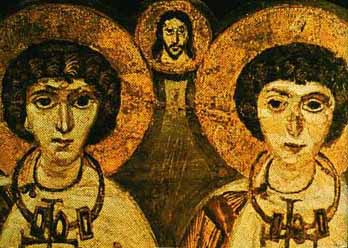
On October 7th the Religion of Antinous honors St. Sergius and St. Bacchus, Christian patron saints of male-male love. They were inseparable officers in the Roman army stationed in Syria during the reign of Emperor Maximian, who was fond of them and honored them repeatedly, which gave rise to jealousy in the court.
A rival denounced Sergius and Bacchus, accusing them of not venerating the ancient gods of Rome, and of being Christians. When summoned to sacrifice to the genius of the Emperor, as was the Roman custom, Sergius and Bacchus refused. They were imprisoned and subjected to a long series of tortures aimed at forcing them to sacrifice to the gods. They were stripped of and made to walk through the streets wearing the clothing of women, a strange form of humiliation not usually inflicted on Christians, but a sign that their sexuality was being used to mock the saints. Bacchus was beaten to death, but Sergius proved to be considerably stronger than any torture that the Pagans could subject him to. When he was on the verge of surrender, and in despair, the spirit of Bacchus appeared to him and said: "Why do you grieve and mourn, brother? If I have been taken from you in body, I am still with you in the bond of union — Hurry then, yourself, through beautiful and perfect confession to pursue and obtain me." Sergius was so strengthened that he could not be compelled to betray his faith, and the pagans chopped off his head. For their strength and for the valor of their love for one another, and because for so many centuries they have remained the champions of homosexual love and devotion, we honor the Christian Saints Sergius and Bacchus as saints of the Religion of Antinous.

On this sad day we honor a young gay man who was brutally murdered: Matthew Shepard, who died at 12:53 am on Monday, October 12th, 1998.
He was brutally assaulted because he was gay, on the night of October 7, by two men who had lured him to a secluded place outside of Laramie Wyoming. His attackers tied him to a fence, beat him and left him for dead in the freezing cold. He was found the following evening by a cyclist. By the time help arrived, he had slipped into unconsciousness.
The death of Matthew Shepard awakened the world to the persecution that homosexuals have endured for centuries. His beauty, youth and innocence affected everyone, and spoke for the hundreds of others who in recent years have died similar deaths without being noticed.
Matthew Shepard is a Sacred and Holy Martyr of Homosexuality, he died an innocent because he was gay. He died a death that so many others have suffered, but his death changed the world.
He was 22 years old, very near the age of Antinous and, like Antinous, his beautiful face, humble origin, and tragic death have had a great impact on the future of homosexuality in our society. We consecrate his memory and pray for him, that he will guide and protect us in our hour of danger, and bring an end to the violence and hatred that he suffered.
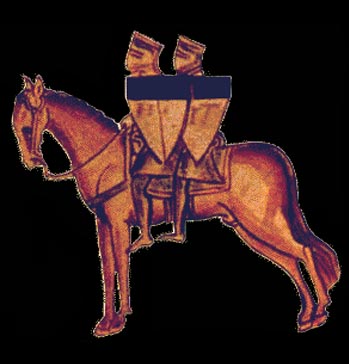
On this day, the origin of the folk belief that "Friday the 13th" is an unlucky day, the Religion of Antinous remembers the Knights Templar.
The proud and courageous brotherhood known as the Order of Knights Templar, who were sworn to protect pilgrims traveling to the Holy Land, were accused of Heresy, Idolatry and Sodomy, and were arrested on Friday the 13th of October in the year 1310 in France.
Although they had fought valiantly during the Crusades, and even stayed behind, sacrificing themselves to guard the retreat of Christian refugees during the fall of Acre in 1291, the order was condemned by the Pope and handed over to the jealous King Philip the "Fair" of France, who coveted their land and immense wealth.
The Knights had adopted the heresy of Catharism which was basically a form of Gnosticism with Manichean influence, that had perhaps been introduced to them in the Holy Land where it flourished under the Moslems.
The Cathars believed that Jesus had descended to the material plane to undo the rule of the God of Israel, and that he had liberated mankind from the law of Moses and the natural order, through salvation in his name.
The Cathars believed that the body, and life itself, was the creation of the Evil One, who claimed to be the "Creator of the Universe."
They did not recognize the authority of the Church and believed that homosexuality was sacred because it was a form of love which did not result in procreation (locking humans in a cycle of earthly incarnations).
Following the Platonic ideal of Venus Urania, the Cathars believed that Brotherly Love was more in keeping Christ's teaching than the love between husband and wife.
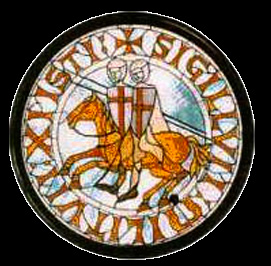
The Knights Templar, whose seal depicted two knights riding on one horse, quite openly advocated this philosophy. But the Papal accusation claimed that they took this to the extreme of sodomy, requiring new initiates to perform the Kiss of Shame, by which they kissed the buttocks and phallus of the Grand Master of the Order.
They were also accused of abandoning Christianity and worshipping a demon called Baphomet, a hermaphroditic, goat-headed idol whose name implied secret knowledge. Other accusations were leveled against the Knights. But Heresy, Satanism, and Sodomy were the crimes which essentially led to their downfall.
Of course most of this information was obtained through torture. But one can only wonder at the consistency that characterizes their confessions.
On this night, the Grand Master Jacques de Molay and thousands of Templars were arrested, tortured, condemned and subsequently Burned at the Stake. From then on, Heresy, Devil worship, and Homosexuality were indistinguishable in the eyes of the Inquisition, perhaps because they were indeed interconnected.
Homosexuality, however, had not been a significant threat to Christendom until it was connected with a diabolical plot to overthrow the order of society and of the Church. This was the beginning of Our Burning Times, and over the course of the next 400 years, thousands of homosexuals were officially and publicly condemned and burned or otherwise executed as an act of faith that, through our extermination, the Church was protecting the world from the Forces of Evil which we embodied.
For their courage and sacrifice, we praise the Order of the Knights Templar as Heroic Martyr Saints of the Religion of Antinous, as the Sacred Band of the Middle Ages, and we recognize their secret god Baphomet as an incarnation of our beloved Dionysus, a manifestation of Homo Deus, and of Our Beautiful God Antinous.
On October 16th, the Religion of Antinous honors SAINT OSCAR WILDE who was born on this day in 1854. He died in ignominy and poverty on November 30th, 1900.
Ostensibly, Saint Oscar Wilde was an Irish playwright, poet and author of numerous short stories and one novel.
Known for his biting wit, he became one of the most successful playwrights of the late Victorian era in London, and one of the greatest "celebrities" of his day.
Several of his plays continue to be widely performed, especially The Importance of Being Earnest.
As the result of a widely covered series of trials, Wilde experienced a dramatic downfall and was imprisoned for two years' hard labour after being convicted of homosexual relationships, described as "gross indecency" with other men.
After Wilde was released from prison he set sail for Dieppe by the night ferry and he never returned to Ireland or Britain.
That is the truth, pure and simple, of his life. But as Saint Oscar himself once famously said: "The pure and simple truth is rarely pure and never simple."
For that reason (and for many others) we remember him not only because he was notorious (something for which he might claim to be quite proud) but because he remembered Antinous.
He kept the name of Antinous alive through his poetry:
"—A moment more, the trees had stooped to kiss
Pale Daphne just awakening from the swoon
Of tremulous laurels, lonely Salmacis
Had bared his barren beauty to the moon,
And through the vale with sad voluptuous smile
ANTINOUS had wandered, the red lotus of the Nile.
"Down leaning from his black and clustering hair
To shade those slumberous eyelids — caverned bliss,
Or else on yonder grassy slope with bare
High-tuniced limbs unravished Artemis
Had bade her hounds give tongue, and roused the deer
From his green ambuscade with shrill hallo and pricking spear.
FROM "THE BURDEN OF ITYS" BY OSCAR WILDE.
"—Lift up your large black satin eyes which are like cushions where one sinks!
Fawn at my feet fantastic Sphinx! and sing me all your memories!
Sing to me of that odorous green eve when couching by the marge
You heard from Adrian's gilded barge the laughter of ANTINOUS
And lapped the stream and fed your drouth and watched with hot and hungry stare
The ivory body of that rare young slave with his pomegranate mouth!
Here are some quotations from Oscar Wilde, starting with the one which our fellow Antinous worshiper/artist Brett Russell in Australia quoted when he wrote to us describing his Antinous Star-Watching Party in the Blue Mountains near Sydney:
We are all in the gutter, but some of us are looking at the stars.
Ordinary riches can be stolen, real riches cannot.
In your soul are infinitely precious things that cannot be taken from you.
I have the simplest tastes. I am always satisfied with the best.
Man can believe the impossible, but can never believe the improbable
The critic has to educate the public; the artist has to educate the critic.
Whenever a man does a thoroughly stupid thing, it is always from the noblest motives.
It is absurd to divide people into good and bad. People are either charming or tedious.
I am so clever that sometimes I don't understand a single word of what I am saying.
I love talking about nothing. It is the only thing I know anything about.
Always forgive your enemies — nothing annoys them so much.
A true friend stabs you in the front.
I don't want to earn my living — I want to live.
Every saint has a past and every sinner has a future.
Nothing that is worth knowing can be taught.
The only thing worse than being talked about is NOT being talked about.
A gentleman is one who never hurts anyone's feelings unintentionally.
What is a cynic? A man who knows the price of everything and the value of nothing.
To live is the rarest thing in the world. Most people exist, that is all.
Be yourself; everyone else is already taken.
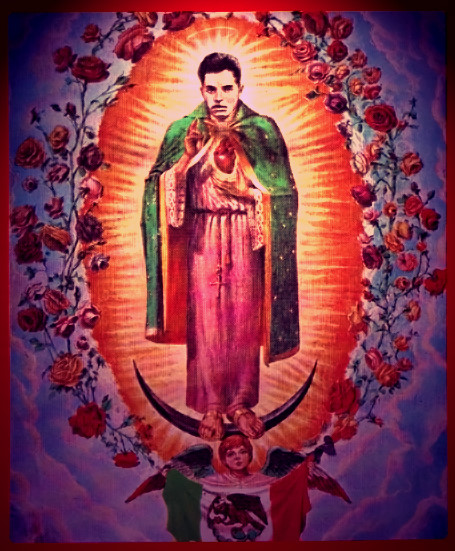
On October 18th the Religion of Antinous honors a gay man who is adored as a saint by millions of people in Mexico.
El Niño Fidencio, Saint of Antinous, was a Mexican "curandero" (male witch healer or shaman) in the 1920s and '30s who is regarded as a saint by his modern-day followers (although he is not recognized by the Catholic Church) and who depicted himself in drag as the Virgin Mary.
His millions of believers point to the fact that he has been credited with innumerable healings and other miracles. He is credited with saving countless lives and with curing incrable ailments.
His millions of believers also point to the numerological phenomenon that he was born on October 18, 1898, and he died on October 19, 1938.
The story of El Niño Fidencio also has many parallels to the story of the Magnificent Religion of Antinous.
Like ANTINOUS THE GAY GOD after deification on the banks of the Nile, El Niño Fidencio was a winsome young man beloved by all who worked miracles along the banks of a great river (Rio Grande) flowing through the barren wasteland of a desert between two lands, the US and Mexico.
The Nile divided the Land of the Living from the Land of the Dead, the Rio Grande divides (or joins) two culturally merging societies.
The Ancients believed Antinous worked miracles in the lives of his faithful followers. Antinous healed the sick, he granted people love and prosperity, he shielded them from peril.
Historian Royston Lambert's book Beloved and God: The Story of Hadrian and Antinous devotes a full chapter to the Religion of Antinous and mentions the miracles he was able to bring forth.
The oracle priests of Antinous could intercede with the God, or followers could appeal directly to Antinous:
"There is evidence of oracles at Tarsos and perhaps at Rome itself," Lambert writes. "No doubt it was through these pronouncements and visitations that he wrought miracles and healing for which he evidently became famous in the east."
In many areas, people named their children Antinous in the fervent belief that he would watch over and protect their offspring all their lives.
There is the well-documented case of a man named Serapamon who lived in Antinoopolis in the 3rd Century and who called on the priests of Antinous for a love spell to attract a certain woman named Ptolemais. Clearly, his followers truly believed he could work miracles for those who believed in him.
Lambert points out: "The frequent use of his medals as talismans or amulets demonstrates demonstrates a widespread faith in his powers in Greece, Asia Minor and Egypt."
Lambert makes it clear that, for early followers of Antinous, there was no doubt in their hearts or minds that he could work miracles — and did so on an everyday basis.
"Indeed," Lambert goes on to state, "the popular vigour and genuine conviction of the 'belief' in Antinous were widespread and persistent enough to provoke the scorn of some sophisticated pagans and the anxious and unremitting indignation of most Christian apologists for two and a half centuries to come."
We should remember the heart-felt faith of the early followers of Antinous, who knew Him to be their salvation. We should remember their undying faith when we watch the YouTube video showing modern-day followers of El Niño Fidencio despite the "anxious and unremitting indignation" of Catholic clerics to this day.
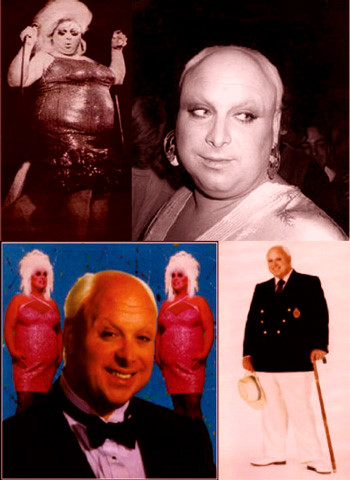
On October 19th the Religion of Antinous honors SAINT DIVINE (October 19, 1945 — March 7, 1988), born Harris Glenn Milstead. Divine was an openly gay American actor, singer and drag queen.
Described by People magazine as the "Drag Queen of the Century," Divine often performed female roles in both cinema and theater and also appeared in women's wear in musical performances. Even so, he considered himself to be a character actor and performed male roles in a number of his later films.
He was most often associated with independent filmmaker John Waters and starred in ten of Waters's films, usually in a leading role.
Concurrent with his acting career, he also had a successful career as a disco singer during the 1980s, at one point being described as "the most successful and in-demand disco performer in the world."
Divine, the seventh-of-a-ton transvestite star of Mr. Waters's early movies, helped set a new standard for drag that endured long after Divine's death of heart failure in 1988, Mr. Waters said.
"When we started in those days, drag queens were square," Mr. Waters explained. "They hated Divine: they wanted to be Bess Myerson. And Divine would show up in a see-through miniskirt with a chainsaw instead of a pocketbook."
The Divine look, which stylist Van Smith first created in 1972 for Pink Flamingos, had three components. First was the hair, shaved back to the crown to allow more room for eye makeup. Second was the makeup, acres of eye shadow topped by McDonald's-arch eyebrows; lashes so long they preceded the wearer; and a huge scarlet mouth. Third were the clothes: shimmering, skintight numbers that gave Divine a larger-than-life female sensuality.
The net effect, as Mr. Smith ordained it, was a cross between Jayne Mansfield and Clarabell the Clown.
"If you look at anything that Divine wore, you sure couldn't find that off the rack," Mr. Waters said.
All of Divine's costumes were constructed by a Baltimore woman who made outfits for strippers. Subtle they were not. There was the red fishtail dress from Pink Flamingos, in which Divine looks equal parts mermaid, Valkyrie and firetruck. And there was the sheer wedding gown she wears in Female Trouble (1974), underwear not included.
Divine once famously said that if anybody was shocked by a 300-pound drag queen in a slinky cocktail dress "then maybe they need to be shocked." He himself would describe his stage performances as "just good, dirty fun, and if you find it offensive, honey, don't join in."
As a part of his performance, he would constantly swear at the audience, often using his signature line of "fuck you very much", and at times would get audience members to come onstage, where he would fondle their buttocks, groins and breasts.
He became increasingly known for outlandish stunts onstage, each time trying to outdo what he had done before. At one performance, held in the Hippodrome in London, that coincided with American Independence Day, Divine rose up from the floor on a hydraulic lift, draped in the American flag, and declared that "I'm here representing Freedom, Liberty, Family Values and the fucking American Way of Life." When he performed at London Gay Pride parade, he sang on the roof of a hired pleasure boat that floated down the Thames passed Jubilee Gardens, whilst at a performance he gave at the Hippodrome in the last year of his life, he appeared onstage riding an infant elephant, known as Bully the Elephant, who had been hired for the occasion.
Divine and his stage act proved particularly popular amongst gay audiences, and he appeared at some of the world's biggest gay clubs, such as Heaven in London. According to Divine's manager, Bernard Jay, this was "not because Divine happened to be a gay person himself... but because it was the gay community that openly and proudly identified with the determination of the female character Divine."
He was also described as "one of the few truly radical and essential artists of the century ... who was an audacious symbol of man's quest for liberty and freedom."
On the evening of March 7, 1988, a week after his starring role in Hairspray was released, Divine was staying at the Regency Hotel in Los Angeles. The next day, he auditioned for a part in the Fox network's television series Married ... with Children. After dining with friends and returning to the hotel, he died in his sleep of an enlarged heart at age 42.

In the early morning hours of Halloween day in 1993, River Phoenix died outside the Viper Room on Sunset Blvd.
He had ingested a fatal combination of alcohol, marijuana, cold medicine, a component of speed, heroin and valium. He was 23 years old.
His Dionysian indulgence caused him to collapse, convulse and then suffer cardiac arrest within a matter of moments. He was dead when he arrived at Cedars Sinai Hospital only some 45 minutes after taking his heroin.
He was one of the most beautiful people that the world has ever known, an Adonis of our time, an amazing actor and musician, whose films will forever immortalize his memory. One of his last roles was as a gay, drug-addict, prostitute in My Own Private Idaho, and it is said that his work on this film had such a profound effect on his soul that he was never again free from it.
He had not only turned to the use of heavy drugs, which he had before scorned, but he is also rumored to have taken up homosexuality, which he did not deny. Indeed the sensitivity and depth that he brought to the tortured prostitute, searching for love, is an intimation of the inner beauty and darkness of understanding that River Phoenix possessed. He had only just been chosen to play the role of the poet Arthur Rimbaud, another Saint of Antinous.
For his achievements in the cinema, for the abandonment of letting the dark god take over his life, and for the sorrowful tragedy of his death, which he embraced fully, almost prophetically, we name the spirit of River Phoenix among the blessed Saints of Antinous, because he was a living Dionysus, and because his final day on earth was the day that the Holy City of Antinoopolis was founded. It is fitting that such a beautiful creature as St. River Phoenix is the first Saint of the Ecclesiastical Year.
